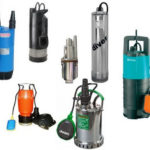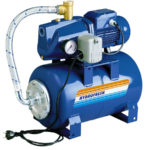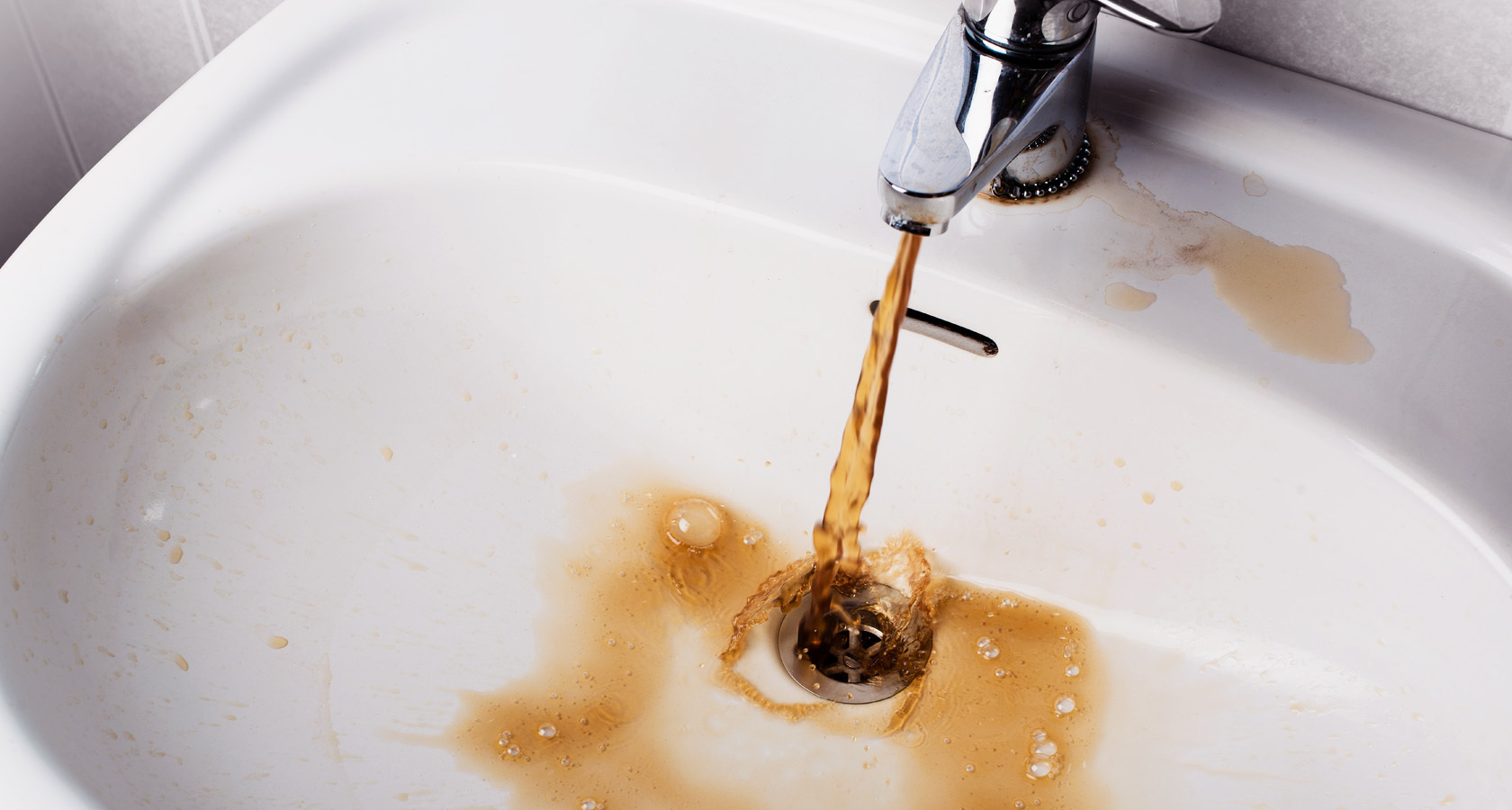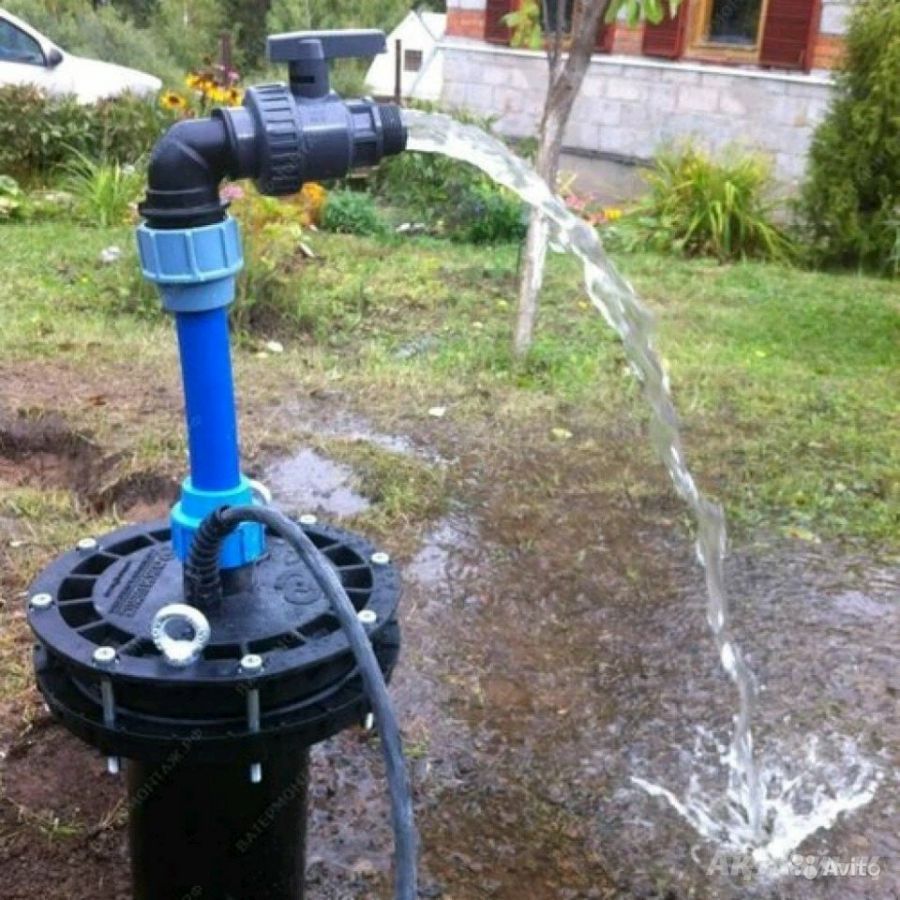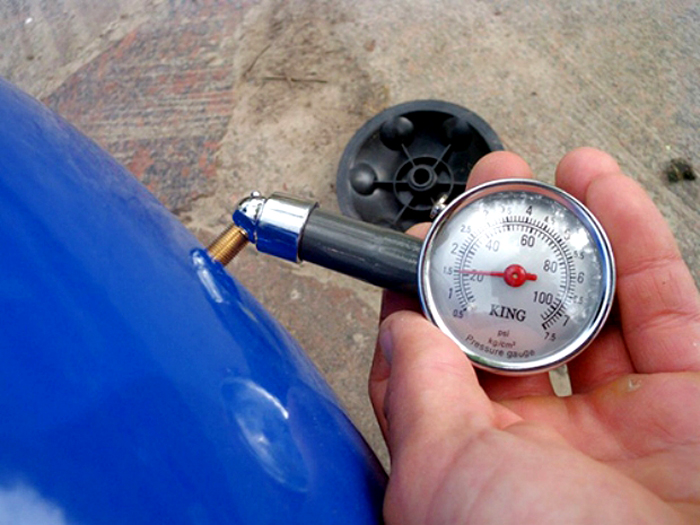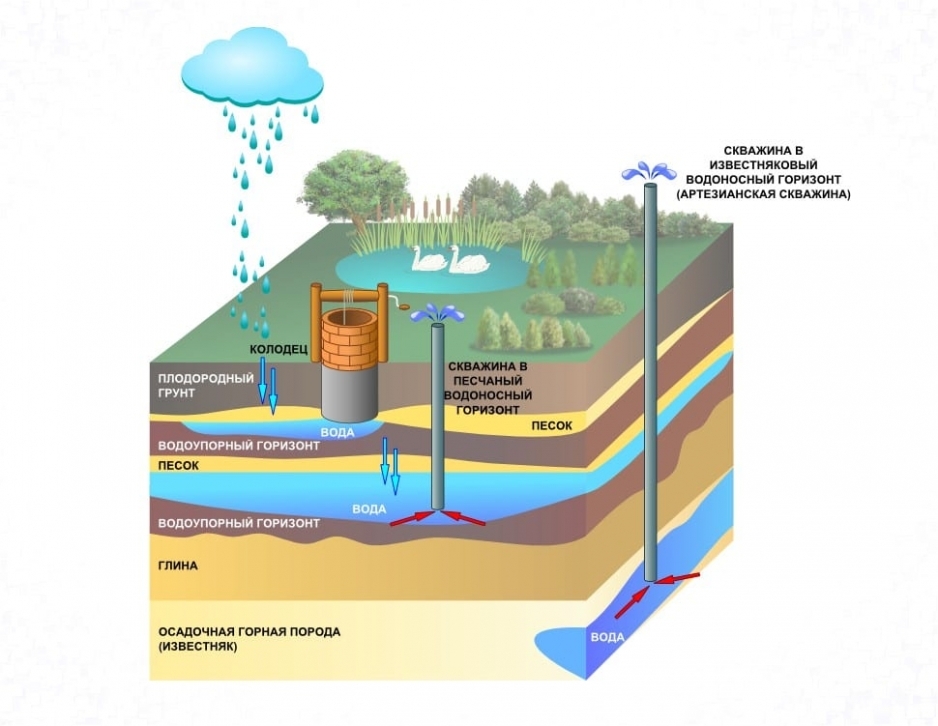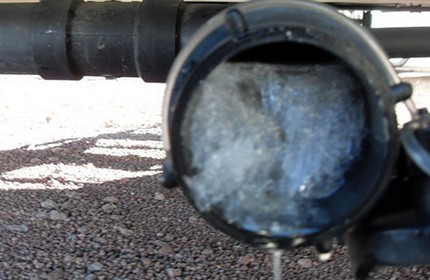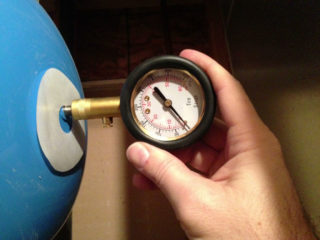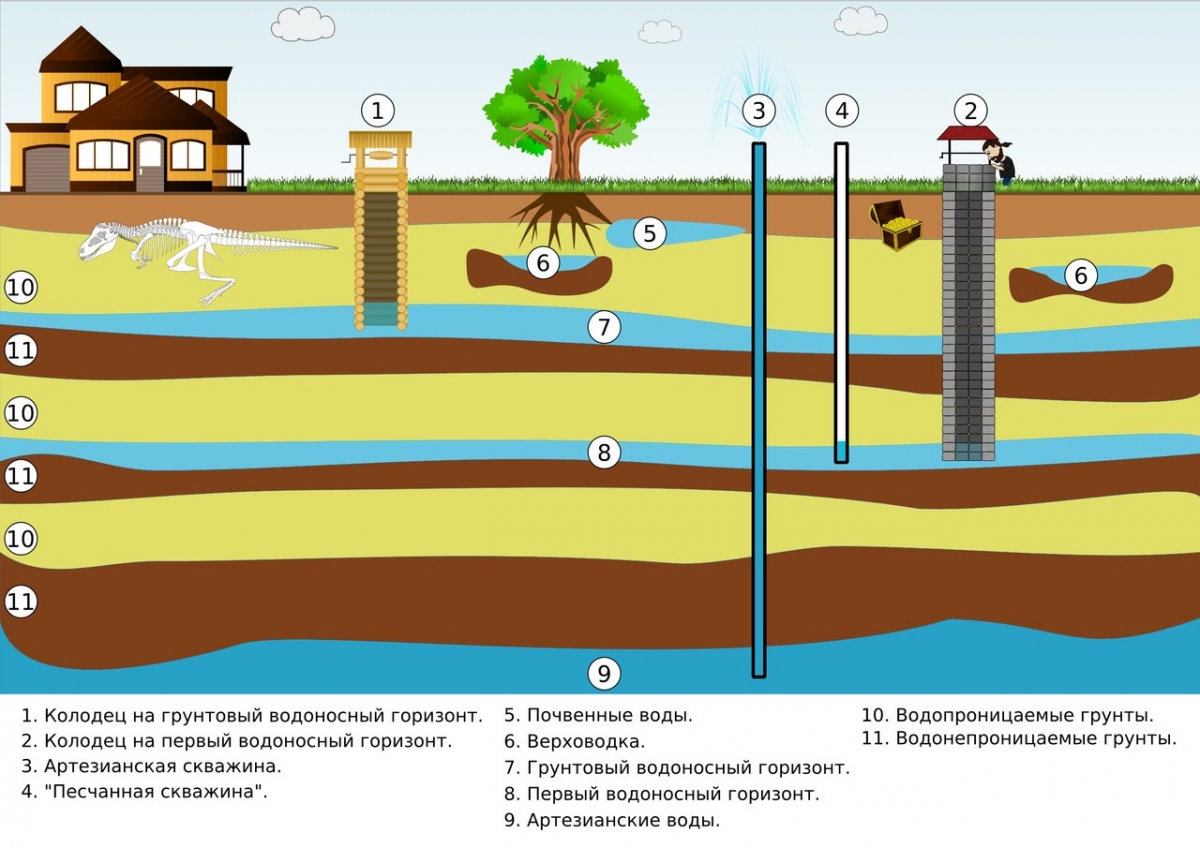The main advantage of an autonomous water supply network is that the owners of country estates do not face the problem of lack or insufficient amount of water. Everyone can make a water supply system in the country from a well; besides, a source for one site does not have to have a large debit.
Water supply in the country from a well through a pumping station
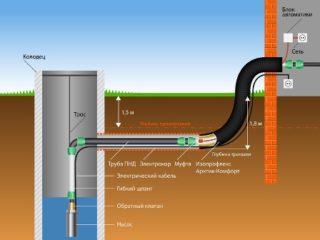
A well, as a source of an autonomous water supply system, equipped with a pumping station or submersible / surface pump, has a number of individual characteristics.
- In comparison with a well, the well has a large shaft diameter, which allows you to easily install powerful and reliable submersible pumps, easily dismantle them, carry out maintenance and repairs if necessary.
- Well water contains a lower concentration of harmful impurities, however, to extend the operating life of the system and use clean water, it is recommended to additionally equip the system with a coarse filter.
- The advantage of such a source is also that homeowners can manually extract water with a bucket during a power outage.
- It is much easier to shut down the system than, for example, wells. This is due to the smooth installation and dismantling of equipment.
A characteristic feature of wells is that, with proper drilling and arrangement, they have less intensity of silting and sanding than wells.
Autonomous water supply system design
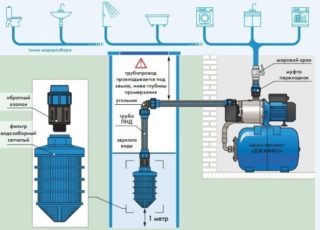
Preliminary design and planning of work related to the arrangement of a summer cottage or a country house is always a significant saving of your own strength, time and financial costs.
Before purchasing all the necessary equipment, it is important to draw up a site plan with the obligatory designation of all objects. The water supply scheme in the country from a well with a submersible or surface pump will allow you to calculate the exact distance from the water intake point to the water taps.
To collect all the information, you need to use a tape measure to measure the entire route of the future water main, take into account each turn, the proposed tie-in and knot. Thanks to this approach, it will be possible to calculate the approximate footage of pipes, as well as other connecting elements: couplings, fittings and adapters.
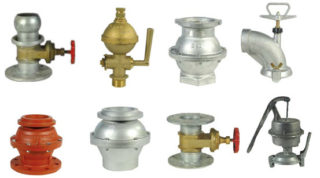
First, you need to think about how the points of consumption of the water resource will be equipped. The following methods are most often practiced:
- Installation of separate communication nodes with taps that lead, for example, to the summer kitchen, bathhouse, etc.
- Inside the house - installation of plumbing equipment, connection of a hydraulic accumulator - a tank designed to store water.
- Outside - installation of several hydrants on the personal plot, designed for the convenience of watering.
For a terrestrial system, consider the safest yet shortest path, such as along fences, storm channels, walkways, etc. The underground structure also includes obligatory earthworks, which requires additional calculations.
When installing a year-round water supply system, it is important to take into account not only the length, but also the depth of the pipes in the trenches on a flat area. The optimum burial depth varies between 30-80 cm, depending on the level of soil freezing with the arrival of cold weather.
The diagram indicates the location of the tap for draining the water. As a rule, this is the longest part of the laid communications. It is important to ensure unhindered access to this site, since with the arrival of cold weather, the water supply system is often subject to conservation.
Having carried out all the calculations, and having schematically depicted all the nuances, you can start work - digging trenches, purchasing all the necessary equipment.
Required tools and materials
First of all, you need to decide on the type of pumping equipment used. You can purchase a pumping station or a submersible pump. Experts always advise giving preference to deep (submersible) devices. This is due to high performance, power, low noise and long service life. The required modification is selected based on the depth of the water mirror.
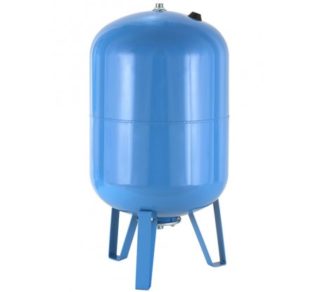
Any scheme of a water supply system includes:
- A hydraulic accumulator is a device whose main task is to protect the entire system from possible water hammer, as well as to maintain optimal pressure in the pipeline. The reservoir of the accumulator accumulates water, therefore, in the event of a power outage, there will be no problems with the water supply. The volume of the tank may vary.
- The drain valve is a small piece that is installed at the lowest point of the entire system. It is used to drain water when preserving the system for the winter.
When conducting a water supply system in a personal plot, pipes (metal or polypropylene), fittings, a mesh filter, connecting elements, taps, mixers, brackets, valves will be required.
To carry out the work, a set of keys, a grinder, a hammer drill and a gas wrench are required.
Installation and connection
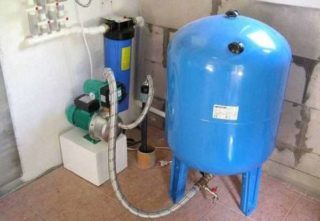
The construction of the water supply system takes place in several stages:
- System design. Purchase of all the necessary equipment, tools and other consumables.
- The year-round system requires digging trenches. Their bottom is compacted with a layer of sand and gravel.
- Pipeline laying
- Installation of a hydraulic accumulator and pumping equipment.
- Connection of the accumulator with the pumping station, their connection to the pipe.
- Cutting the intake pipeline into the well shaft.
- Indoor piping.
All work is carried out using special squeegees - short pipes, equipped with threads on both sides. The connection to the pipes is carried out using flanges or fitting adapters.
In order to prevent the appearance of leaks in the future, the joints are carefully treated with special sealants. Pipes made of polyethylene are connected with solders or fittings. The junction is also additionally treated with a sealant. When working with polyethylene pipes, it is strictly forbidden to use mastic and bitumen.
Features of operation and maintenance
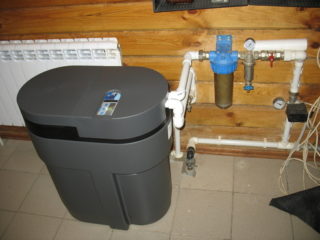
A properly selected, installed and regularly maintained system rarely fails. To prevent breakdowns, it is important to periodically carry out preventive measures.
- Pumping equipment - it is required to regularly monitor the performance and operation of the equipment, in a timely manner to change all consumables, for example, rubber gaskets.
- Filters - the use of cleaning filters for coarse cleaning allows you to separate solid impurities from well water, this improves the composition of the water and has a beneficial effect on the operation of the entire autonomous water supply system.
- Sealing. If the water quality deteriorates, it is imperative to check the sealing of the well casing seams.
- Observe the working pressure in the pipeline. Allowed parameters are from 2.5 to 4 atmospheres.
Summer water supply is cheaper than year round. However, the latter has a list of disadvantages. First of all, every year there is a need to install and then dismantle the pipeline network, otherwise in winter it will freeze and fail.
Prices for conducting a summer water supply from a well in the country, depending on the depth of the source and the area of the personal plot, ranges from 5,000 to 15,000 rubles. When arranging a year-round highway, temporary, physical and financial investments increase significantly.

